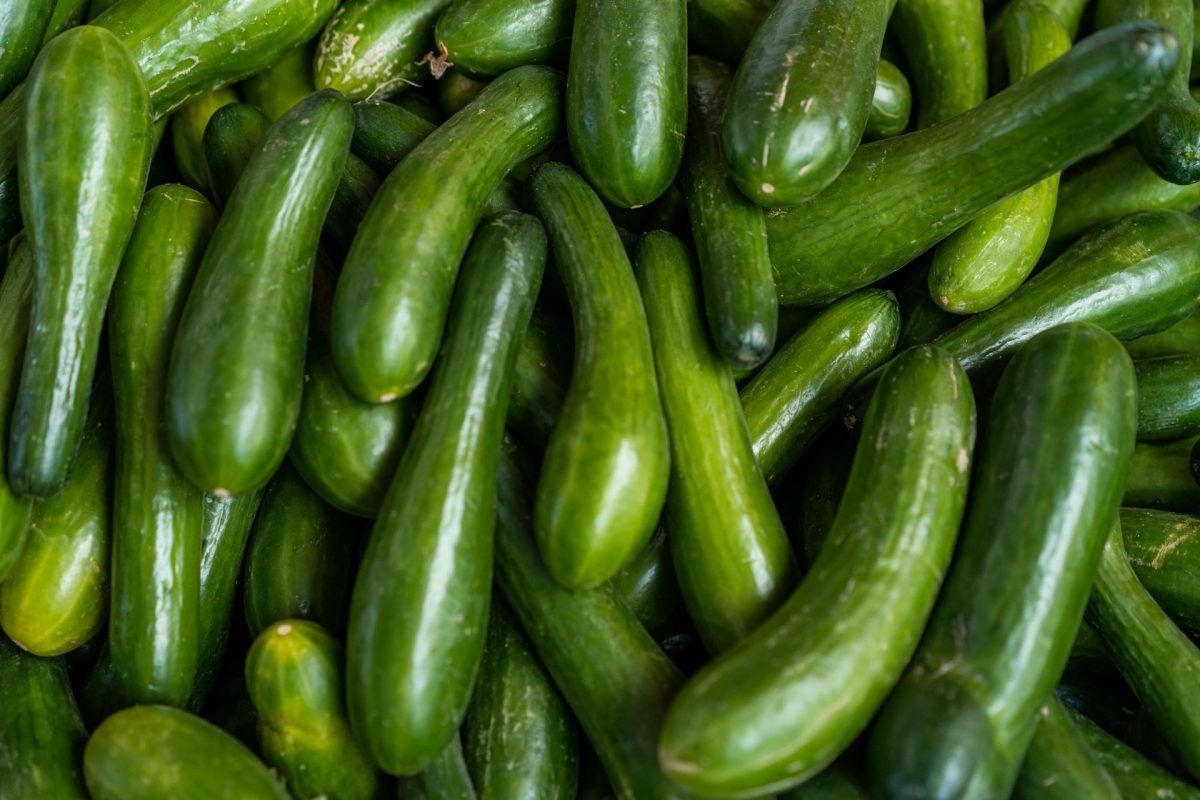Table of Contents
ToggleCucumber Cultivation: A Comprehensive Guide to Optimal Growth
Cucumber (Cucumis sativus L.), belonging to the Cucurbitaceae family, is an annual plant from the cucumis genus. With a water content of approximately 97%, cucumbers are low in calories and boast a composition rich in vitamins, enzymes, and mineral substances. Due to its surplus, this vegetable plays a vital role in neutralizing increased acidity resulting from the consumption of protein-rich foods.
Ecological Requirements for Successful Cucumber Farming
During the seedling cultivation period, the ideal soil temperature ranges from 18-20°C, while daytime air temperatures should be between 20-24°C and nighttime temperatures at 18-20°C. Throughout the cultivation period, the optimal temperatures are 18-20°C at night and 26-30°C during the day. Cucumber plants thrive under high light and temperature conditions, requiring 2.5-4 liters of water per square meter daily. Efficiently managing this water through a drip irrigation system is crucial. Additionally, maintaining a humidity level between 60-80% in the greenhouse is essential.
Cucumbers are selective in terms of soil preferences, favoring well-drained soils with a low soluble salt level and free from diseases and pests. Growing cucumbers in high-salt environments, common in certain types of greenhouses, is not advisable. If soil analysis reveals high salt levels, a practical method is to wash the soil through flooding irrigation during vacant periods in the greenhouses. Ideally, cultivation should take place in sandy, light, and organically rich soils, and fertilizers should be applied based on soil analysis results at the beginning of cultivation.
Cultivation Techniques for Cucumber Farming
In greenhouse cucumber cultivation, especially for pickling purposes, it is recommended to use parthenocarpic F1 hybrid varieties that do not face issues with pollination and fertilization. For seedling cultivation, a mixture of soil, creek sand, and farm manure, free from diseases, is prepared. This mixture is filled into plastic bags or pots, watered a day before sowing. Seed sowing for spring cultivation is done in the second half of February, and for fall cultivation, in the second half of July. Once the seedlings have 3-4 leaves, they are transplanted into the greenhouse.
Planting and Training Techniques
Prepared ridges should be oriented north-south, with double-row cultivation typically done at 100x50x50 cm intervals. Depending on the variety, planting distances may vary. In a 240 m2 greenhouse, approximately 400-450 seedlings are planted. Seedlings are transplanted without disturbing the soil in bags or pots, ensuring the root collar remains above the soil, and water is provided immediately. After planting, a string or wire is drawn along the row for support, and the plant is trained to this support structure. An alternative method is using knots to secure the plant to a hanging wire or specialized hook.
Pruning Techniques for Optimal Growth
Until the plant reaches a height of 25-30 cm, all fruits and side shoots below this height are removed. However, caution is exercised not to touch the leaves emerging directly from the main stem. The primary goal of this pruning is to strengthen the plant. After this stage, no flowers on the main stem are touched until it reaches the wire. For lateral shoots, one fruit and one leaf are left on each side, and the tip is pruned once it turns downward after reaching the wire. Misshapen or non-standard fruits are removed.
In recent years, varieties with weak lateral branching have been developed to save labor costs. To promote better illumination and ventilation, old and diseased leaves, as well as lower lateral branches, are cleaned. Additionally, leeches attached to the suspension string are left, while others are removed.
Irrigation and Fertilization Strategies
Cucumber’s root structure emphasizes the principle of less water but frequent irrigation. The amount of water used for cucumber cultivation and the irrigation frequency depend on environmental temperature and plant height. For greenhouse cultivation, it is recommended to create holes at root depth in several places, monitoring water leakage from these holes to adjust the irrigation schedule. These holes should be positioned between two emitters to avoid direct water impact. After running the system for a reasonable period, check these holes, and if water leakage is observed at the bottom, close the system. This allows for the preparation of a tailored irrigation program based on the greenhouse’s specific needs.
Starting from the flowering and fruit-setting stage, fertilization should be initiated in conjunction with irrigation. The following fertilizer forms are recommended based on the plant’s development and crop load:
- For nitrogen needs: Ammonium Nitrate (33%) and Urea (46%).
- For combined potassium and nitrogen needs: Potassium Nitrate (13-0-46).
- For phosphorus needs: Phosphoric Acid.
Phosphoric acid is also used to unclog holes. During late fall and winter when light intensity is low, urea use is not recommended, and in cold seasons, nitrogen in nitrate form should be used.
The amount of fertilizer applied through drip irrigation is proportional to the amount of water applied. As a general guideline, it is suggested to have an average of 0.3 grams of pure NPK per liter of water. Practically, the fertilizer ratio applied is increased from the first cluster formation to the first harvest and gradually reduced from the first harvest to the end of the harvest period.
Harvesting Techniques
Harvesting can be done every 2-3 days, and during the peak yield period, daily harvesting is recommended. Harvesting should take place in the early morning or evening using a knife. It is crucial to harvest fruits promptly to prevent inhibition of upper fruit set. No pesticide application is needed before harvesting.
This comprehensive guide provides insights into the nuances of cucumber cultivation, covering ecological requirements, cultivation techniques, training methods, pruning strategies, and optimal irrigation and fertilization practices. Following these guidelines ensures a successful cucumber harvest, offering a wealth of information for both novice and experienced farmers.

